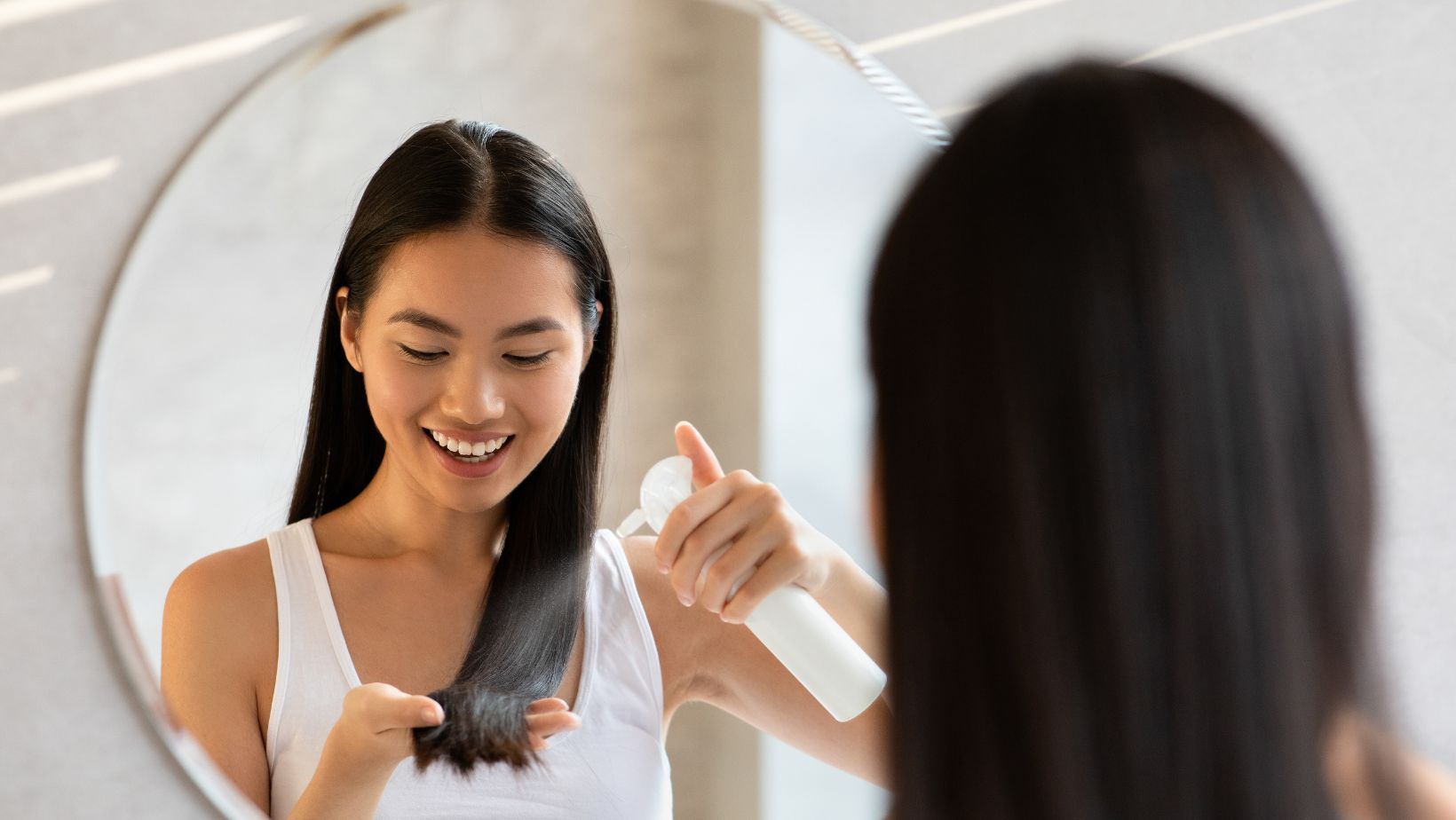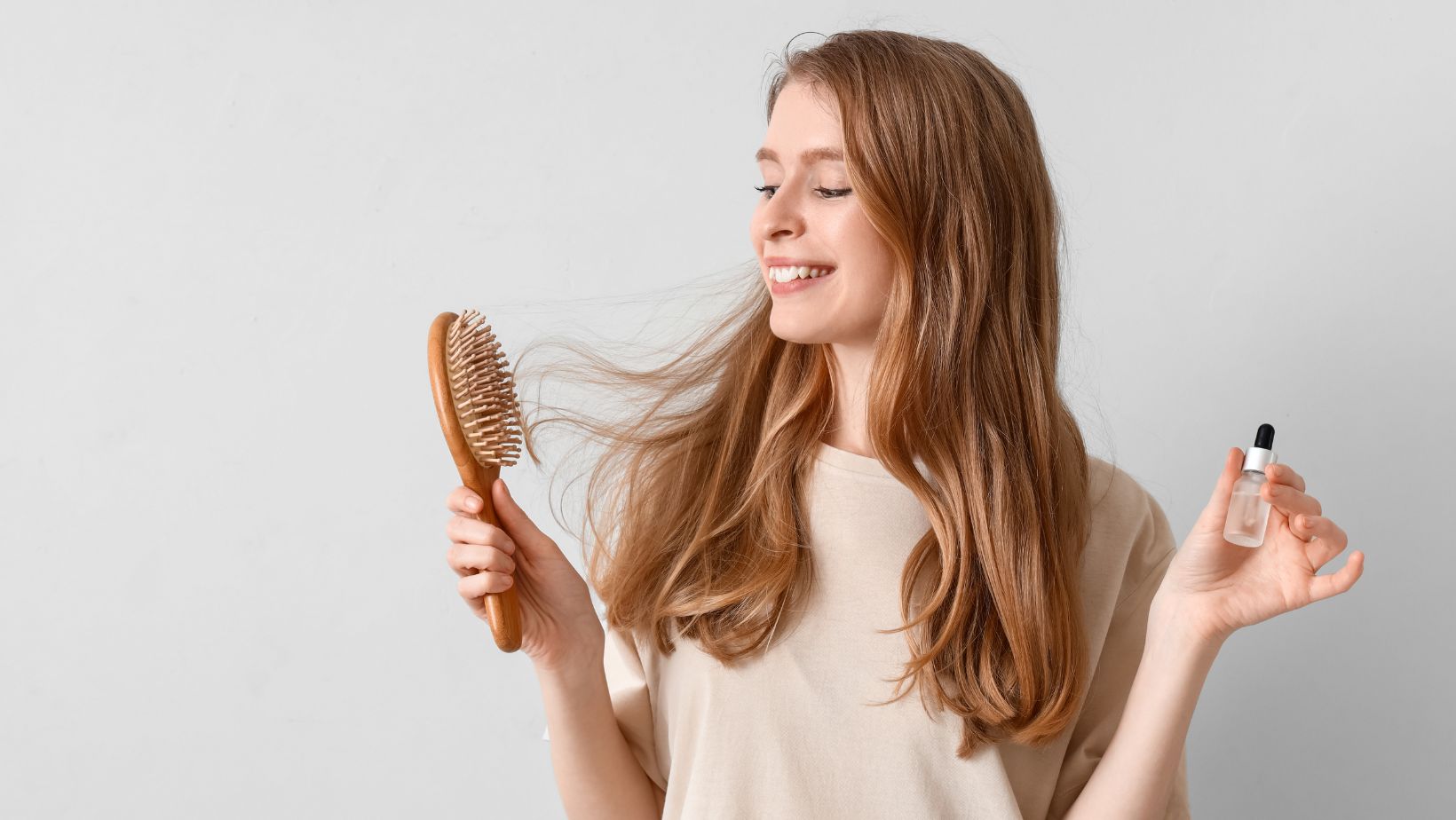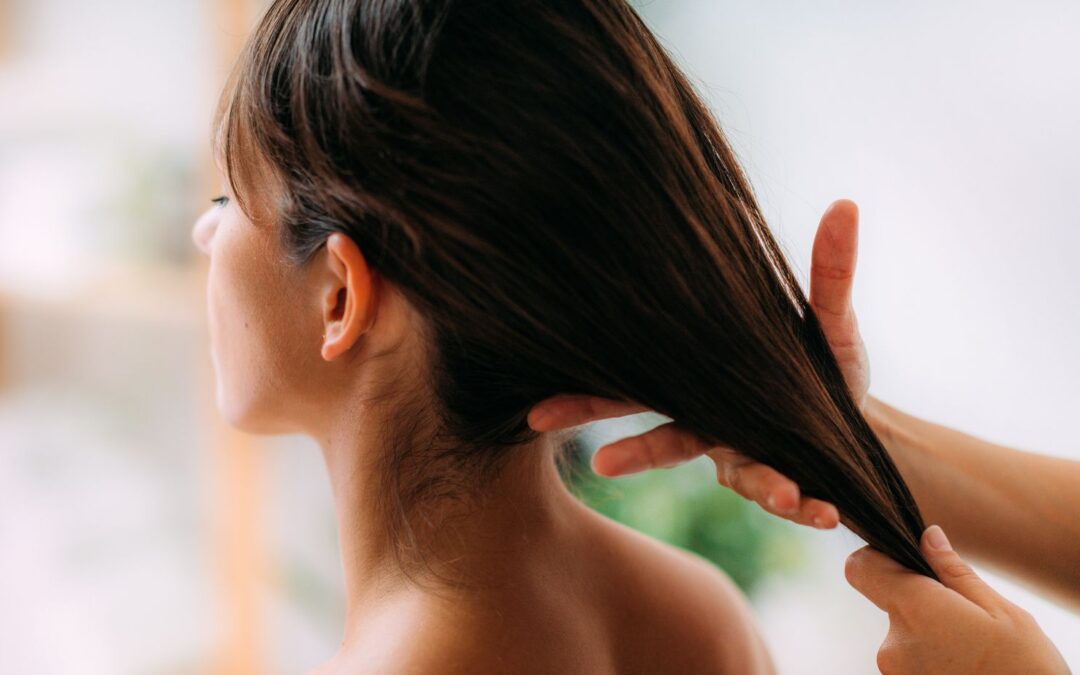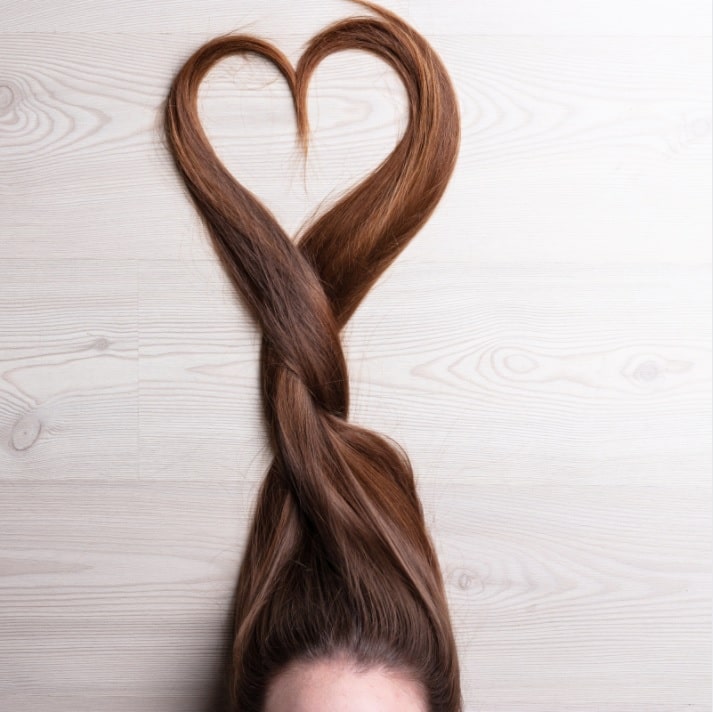Hair growth tips are everywhere, yet your locks remain stubbornly stunted. You’ve tried the popular products and followed the mainstream advice, and still, your hair seems stuck in a perpetual state of meh. But here’s the thing – maybe you’ve been missing out on the real secrets to hair growth. These are the kind of tips that aren’t plastered on every shampoo bottle but are whispered among those in the know, Find wood hair sticks
We’re not talking about the usual suspects like getting enough sleep or drinking more water (though, yes, do those too). We’re discussing what actually gets those follicles firing on all cylinders. Think of this as your insider’s guide to the hair growth tips you wish you’d known sooner – the game-changers that could transform your hair from lackluster to luscious.
Why waste time on the same-old, same-old when you can supercharge your hair growth with a few simple tweaks? From scalp massages that feel more indulgent than a day at the spa to dietary tweaks that don’t involve kale smoothies (unless you’re into that), we’ve got the lowdown on how to make your hair thrive.
The Magic of Scalp Massages
You might think of scalp massages as just another pampering session, but they’re actually a powerhouse when it comes to promoting hair growth. This isn’t just a luxurious treat; it’s a scientifically backed method that can transform your hair care routine. Let’s dive into the nitty-gritty of why scalp massages are your secret weapon for healthy hair growth.
The Science Behind Scalp Massages
So, what’s the big deal about scalp massages?
It all comes down to blood circulation. When you massage your scalp, you increase blood flow to the hair follicles. This increased circulation means more nutrients and oxygen are delivered to your follicles, which stimulates hair growth. Studies have shown that regular scalp massages can significantly improve hair thickness and growth over time. It’s not magic; it’s science – and it’s something you can easily incorporate into your routine.
Tips for Effective Scalp Massages
Here are some tips for hair growth to make your scalp massages as effective as possible:
- Use Your Fingertips: Ditch the nails – they can cause damage to your scalp. Use your fingertips to apply gentle pressure in circular motions.
- Be Consistent: Aim for a five-minute massage at least three times a week. Consistency is key to seeing results.
- Add Some Oil: Incorporating a few drops of essential oil like rosemary or peppermint can enhance the benefits. These oils are known for their stimulating properties and can give your scalp massage an extra boost.
- Try a Scalp Massager: If you want to take things up a notch, invest in a scalp massager. These tools are designed to mimic the motions of your fingers and can make your massage sessions more effective and enjoyable.
Don’t just take our word for it. Experts agree that scalp massages are a powerful tool for promoting hair growth. A study published in the Dermatology and Therapy journal found that regular scalp massages increased hair thickness in participants over a 24-week period. Trichologists – experts in hair and scalp health – often recommend scalp massages as part of a holistic approach to hair care. They emphasize that while products and treatments play a role, the simple act of massaging your scalp can make a significant difference.
Tight Hairstyles are Sabotaging Your Hair Growth
Tight hairstyles might look sleek and stylish, but they can be a hidden enemy in your quest for longer, healthier hair. The culprit here is traction alopecia, a condition caused by consistent pulling on the hair follicles. Over time, this can lead to permanent hair loss – definitely not what you’re aiming for with those tight ponytails and braids.
Traction alopecia occurs when the hair is pulled tightly for extended periods. This constant tension weakens the hair follicles and can cause them to become inflamed. In severe cases, the follicles can become so damaged that they stop producing hair altogether. It’s like asking your hair to play tug-of-war every day – and trust us, your hair is not a fan.
But don’t worry, you don’t have to sacrifice style for the sake of your hair’s health. There are plenty of chic alternatives that are both gentle and fashionable. Loose buns, soft braids, and low ponytails are great options that reduce the stress on your hair follicles. These styles not only look great but also promote healthier hair growth.
Now, here’s a surprising fact: consistently wearing tight hairstyles can actually slow down your hair growth more than you might think. It’s not just about the breakage at the ends – the constant tension can disrupt the natural growth cycle of your hair. So, while it might seem like a quick fix to slick your hair back into a tight bun, you could be doing more harm than good in the long run.
For those rocking curly hair, the stakes are even higher. Curly hair growth tips often emphasize the importance of gentle handling due to the hair’s natural fragility. Opting for protective styles that don’t stress the roots is key. Soft twists or loose, pinned-up styles can keep your curls in check without compromising their health.

Incorporating these tips for hair growth and healthy hair into your routine can make a significant difference. Remember, the goal is to keep your hair happy and thriving. By giving your hair a break from the tension and opting for gentler styles, you’re setting yourself up for success in your hair growth journey.
Feed Your Hair from the Inside Out
Let’s get real – no matter how many serums, oils, or shampoos you slather on, your hair’s health starts from within. It’s time to give your locks some love from the inside out. This means paying attention to what you eat because good nutrition can be one of the best tips for hair growth.
Vitamins and Minerals
Certain vitamins and minerals are like superfoods for your hair. They don’t just help it grow; they make it stronger, shinier, and healthier. Here’s a quick rundown of the key nutrients your hair craves:
- Vitamin A: This vitamin is essential for cell growth, and that includes your hair. It helps your scalp produce sebum, which keeps your hair moisturized and healthy. You’ll find vitamin A in sweet potatoes, carrots, and dark leafy greens.
- Vitamin C: Known for its immune-boosting powers, vitamin C also plays a crucial role in hair health. It helps your body produce collagen, a protein that strengthens hair. Load up on citrus fruits, strawberries, and bell peppers.
- Vitamin D: A deficiency in vitamin D is linked to hair loss. Ensure you get enough sunlight and eat foods like fatty fish, egg yolks, and fortified foods.
- Vitamin E: This antioxidant helps prevent oxidative stress, which can damage hair. Nuts, seeds, and spinach are excellent sources of vitamin E.
- Iron: Low iron levels can lead to hair loss. Boost your intake with red meat, lentils, and spinach.
- Zinc: Zinc plays a key role in hair tissue growth and repair. It also keeps the oil glands around hair follicles working properly. You can find zinc in foods like oysters, beef, and pumpkin seeds.
- Omega-3 Fatty Acids: These healthy fats nourish your hair, support thickening, and reduce inflammation that can lead to hair loss. Fish like salmon, mackerel, and sardines are packed with omega-3s, as are walnuts and flaxseeds.
Foods That Pack a Punch
Now that you know which nutrients your hair needs, let’s talk about how to get them from your diet. Incorporating these foods into your meals can make a noticeable difference in your hair’s health and growth:
- Eggs: They’re a great source of protein and biotin, both of which are crucial for hair growth. Biotin, in particular, is often touted as one of the best tips for hair growth.
- Berries: Loaded with vitamins and antioxidants, berries help protect hair follicles against damage from harmful molecules called free radicals.
- Spinach: This leafy green is packed with iron, vitamin A, vitamin C, and folate, all of which contribute to healthy hair.
- Avocados: Rich in vitamin E and healthy fats, avocados are great for moisturizing and strengthening hair.
- Nuts and Seeds: Almonds, walnuts, and chia seeds are excellent for delivering a good dose of vitamins and minerals, including zinc and vitamin E.
- Sweet Potatoes: Sweet potatoes are high in beta-carotene, which your body converts into vitamin A. Sweet potatoes are great for promoting healthy hair growth.
Multiple studies have shown the link between diet and hair health. For instance, research published in the Journal of Clinical and Aesthetic Dermatology highlights how deficiencies in key vitamins and minerals can lead to hair loss and other hair problems. Another study in the Dermatology Practical & Conceptual journal points out the benefits of a balanced diet rich in these nutrients for promoting hair growth.
Incorporating these dietary changes can make a significant difference in your hair’s health and growth. If you’re ever in doubt, consulting with a professional at a reputable hair salon in Denver can provide personalized advice and treatments to complement your nutritional efforts.
Avoid Over-Washing Your Hair
Frequent washing might seem like a good idea, especially if you love that squeaky-clean feeling. But here’s a twist: over-washing your hair can actually sabotage your hair growth efforts. When you wash your hair too often, you strip away the natural oils that are essential for keeping your scalp and hair healthy. These oils, produced by your scalp, are like nature’s conditioner, keeping your hair moisturized and protected.
So, how often should you be washing your hair? The sweet spot is generally two to three times a week. This allows your scalp to maintain its natural oil balance, promoting healthier hair growth. If you’re worried about greasy roots in between washes, dry shampoo can be your best friend – just make sure to choose one that’s free of harsh chemicals.
Speaking of chemicals, let’s talk about shampoos. Many conventional shampoos contain sulfates, which are great for creating that rich lather but not so great for your hair. Sulfates can be incredibly drying, stripping your hair of those precious natural oils. Instead, opt for sulfate-free shampoos. These gentler formulas cleanse your hair without causing dryness or irritation, making them a key part of your natural hair growth tips toolkit.
Now, over-washing your hair doesn’t just lead to dryness – it can also trigger an overproduction of oil. When your scalp is constantly stripped of its natural oils, it goes into overdrive to replace them, resulting in even oilier hair. This vicious cycle can make you feel like you need to wash your hair more often but resist the urge! Sticking to a less frequent washing schedule allows your scalp to find its natural balance.

Incorporating these hair growth tips at home can make a significant difference. Adjusting your washing routine and choosing the right products are simple changes that can lead to healthier, longer hair.
Trim Regularly to Grow Longer
Let’s get one thing straight: trimming your hair to make it grow longer might sound like a paradox, but it’s a tried-and-true hair growth tip that really works. Here’s why those regular trims are essential and how you can make the most of them.
Why Trimming Matters
Split ends are the enemy of healthy hair growth. When the ends of your hair start to split, they travel up the hair shaft, causing more breakage and damage. By trimming your hair regularly, you cut off these split ends before they can do more harm, allowing your hair to grow stronger and healthier. Think of it as pruning a plant: snip away the dead bits to let the healthy parts thrive.
How Often Should You Trim?
So, how often should those scissors come out? Ideally, you want to trim your hair every 8 to 10 weeks. This timeframe helps maintain your hair’s health without sacrificing too much length. If you’re prone to split ends or use heat styling tools frequently, you might need to trim a bit more often. The goal is to keep those ends tidy and prevent splits from getting out of control.
Signs It’s Time for a Trim
Not sure when it’s time for a haircut? Here are a few telltale signs:
- Frayed Ends: If your hair looks more straw-like and you see those dreaded split ends, it’s time for a trim.
- Increased Tangles: Notice more knots and tangles than usual? Damaged ends can make your hair tangle more easily.
- Loss of Shape: If your hairstyle is losing its shape or looking a bit flat, a trim can revive it and add bounce.
- Slower Growth: If it feels like your hair has hit a growth plateau, trimming the ends can help jumpstart growth by keeping your hair healthy.
But don’t forget that your facial hair can benefit from similar care. Just like the hair on your head, regular trims can help maintain the shape and health of your beard or mustache. Incorporate these facial hair growth tips to keep everything looking sharp and well-groomed.
Jessica has a flair for writing engaging blogs and articles. She enjoys reading and learning new things which enables her to write different topics and fields with ease. She also strives to break down complex concepts and make them easy for anybody to comprehend.





